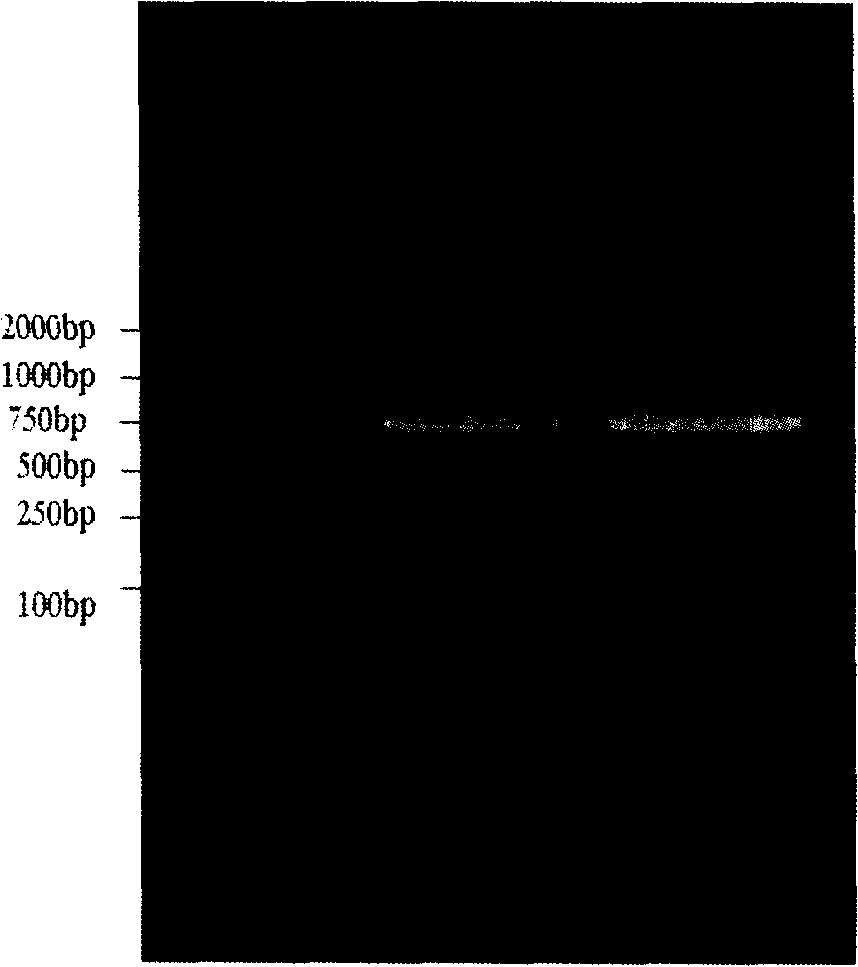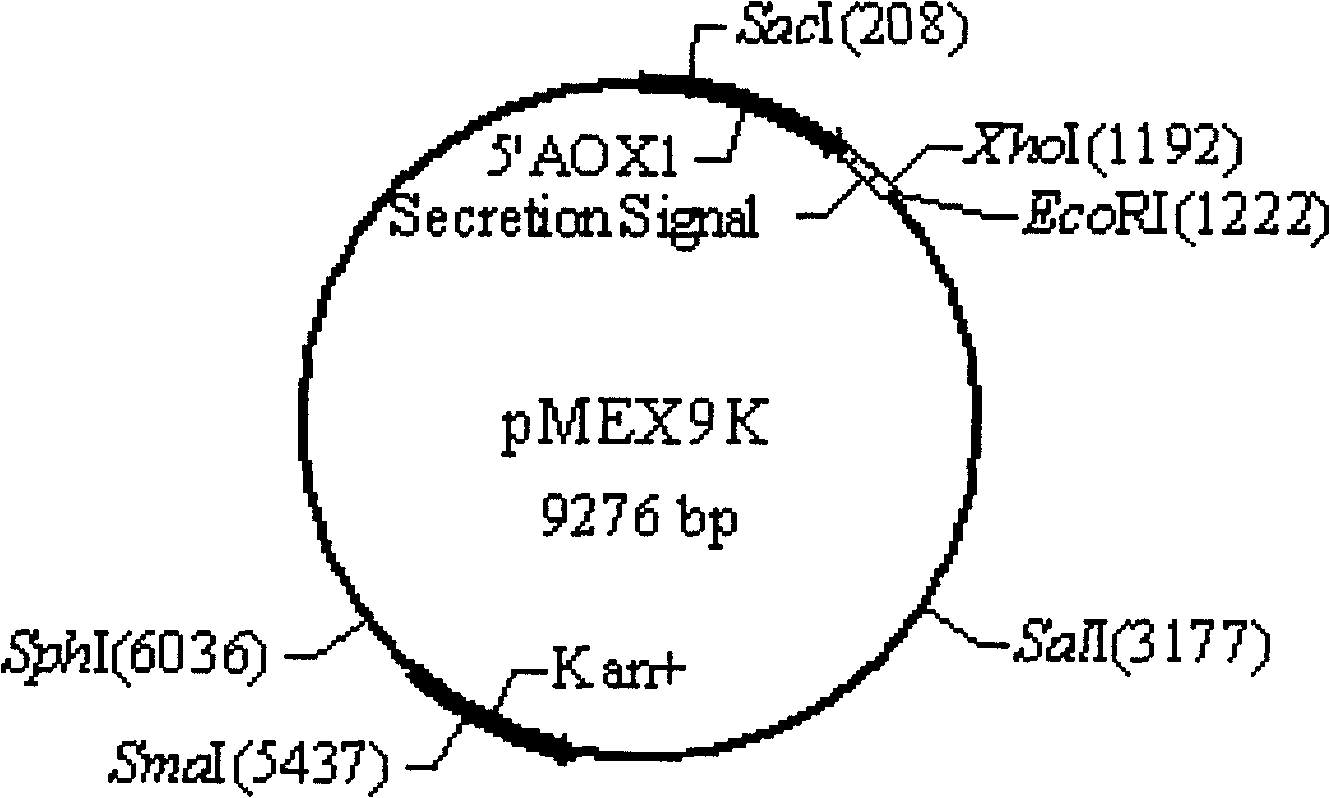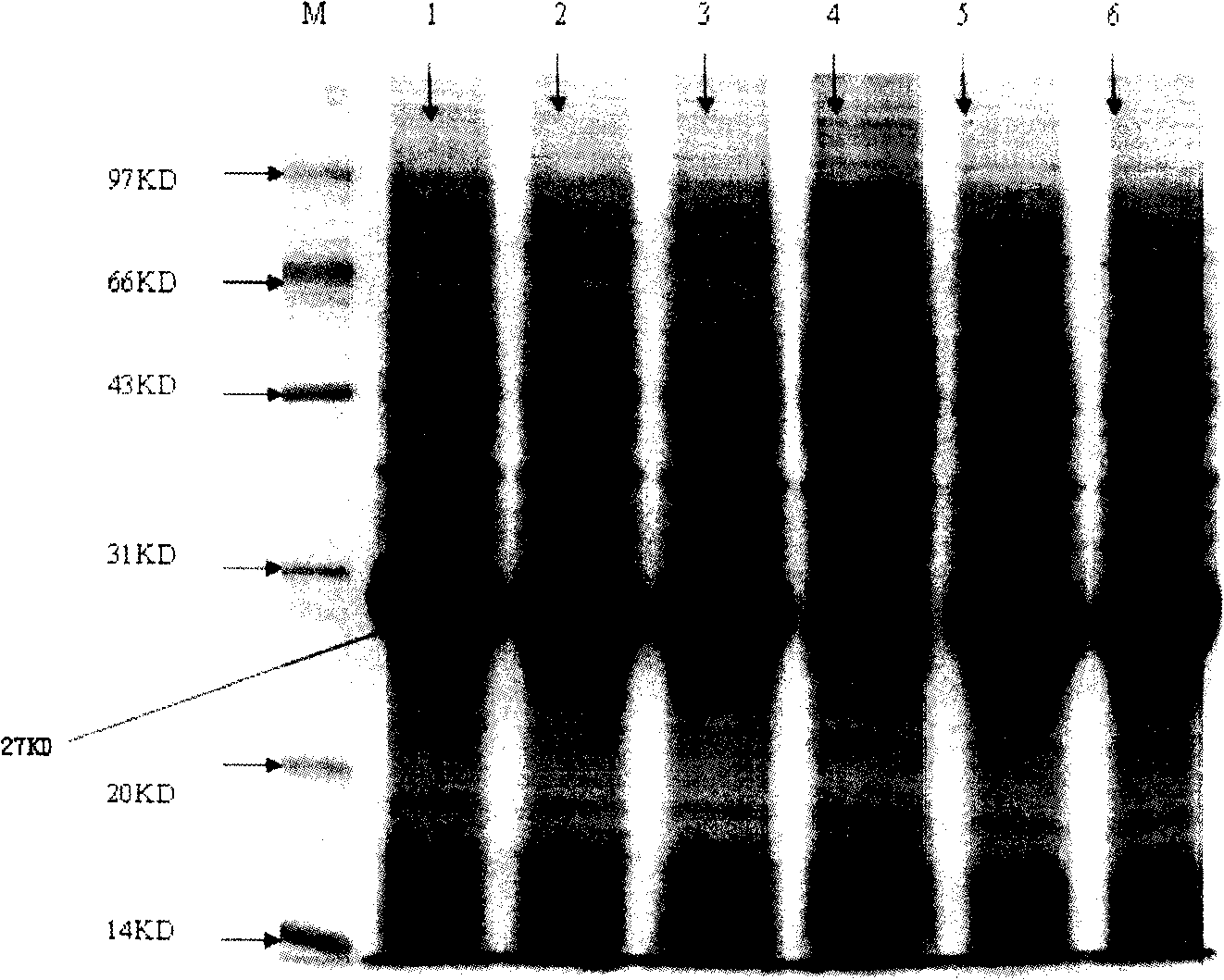Bacillus anthracis gamma bacterial virus catenase expression method
A phage lytic enzyme, Bacillus anthracis technology, applied in the direction of lytic enzymes, microorganism-based methods, biochemical equipment and methods, etc.
- Summary
- Abstract
- Description
- Claims
- Application Information
AI Technical Summary
Problems solved by technology
Method used
Image
Examples
Embodiment 2
[0053] Embodiment 2, construction of recombinant expression plasmid
[0054] The PCR product was cut with SacI and EcoR I, and the secreted yeast expression vector pMEX9K ( figure 2 ) connection, transform Escherichia coli DH5α by TSS method, and screen the positive clones to extract the plasmid. Sent to Takara Company for sequencing, the sequencing results showed that the 702bp fragment was PlyG gene, two nucleotide positions were mutated, but they were all synonymous mutations, the amino acid sequences were completely consistent after comparison, the expression vector was successfully constructed, and the recombinant plasmid was named is pMEXplyG.
Embodiment 3
[0055] Embodiment 3, the efficient expression of PlyG gene in yeast
[0056] The recombinant plasmid pMEXplyG DNA was extracted, then digested with Sac I to linearize it, separated and purified, and then transformed into Pichia pastoris GS115 by electroporation. The transformed GS115 was screened by MD plate to obtain HIS + For recombinant clones, the clones grown on the MD plate were inoculated on the YPD--G418 plate and cultured in a 30°C incubator. Recombinant clones screened from MD plates and YPD plates with different G418 concentrations were inoculated in 5ml BMGY respectively, and cultured at 30°C and 300r / min until OD 600 2.0~6.0; centrifuge at 4000r / min for 4min at room temperature. The collected bacteria were suspended with BMMY and diluted to OD 600 After reaching 1.0, induce at 30°C 300r / min. Add methanol to 0.5% every 12h. After 48 h of induction, the culture supernatant was collected, and the protein expression was detected by SDS-PAGE ( image 3 ) and meas...
Embodiment 4
[0057] Embodiment 4, three-step chromatographic purification of PlyG protein
[0058] Chromatographic purification methods mainly include ion exchange chromatography, hydrophobic interaction chromatography, affinity chromatography, and gel filtration chromatography. In the present invention, PlyG is secreted and expressed in the fermentation supernatant, and bacteria and large particle impurities are removed by centrifugation, filtration, etc.; then small molecule pigments and salts are removed by ultrafiltration, and the volume is concentrated, and the fermentation broth is adjusted A suitable buffer is beneficial for the next step of chromatographic purification.
[0059] The first step of chromatographic purification uses cation exchange medium SP Sepharose XL. SP Sepharose XL medium has the characteristics of high loading, fast flow rate and easy handling, and can quickly and effectively capture plyG from the ultrafiltrate. After loading the sample, in consideration of th...
PUM
| Property | Measurement | Unit |
|---|---|---|
| recovery rate | aaaaa | aaaaa |
| purity | aaaaa | aaaaa |
Abstract
Description
Claims
Application Information
 Login to View More
Login to View More - R&D
- Intellectual Property
- Life Sciences
- Materials
- Tech Scout
- Unparalleled Data Quality
- Higher Quality Content
- 60% Fewer Hallucinations
Browse by: Latest US Patents, China's latest patents, Technical Efficacy Thesaurus, Application Domain, Technology Topic, Popular Technical Reports.
© 2025 PatSnap. All rights reserved.Legal|Privacy policy|Modern Slavery Act Transparency Statement|Sitemap|About US| Contact US: help@patsnap.com



